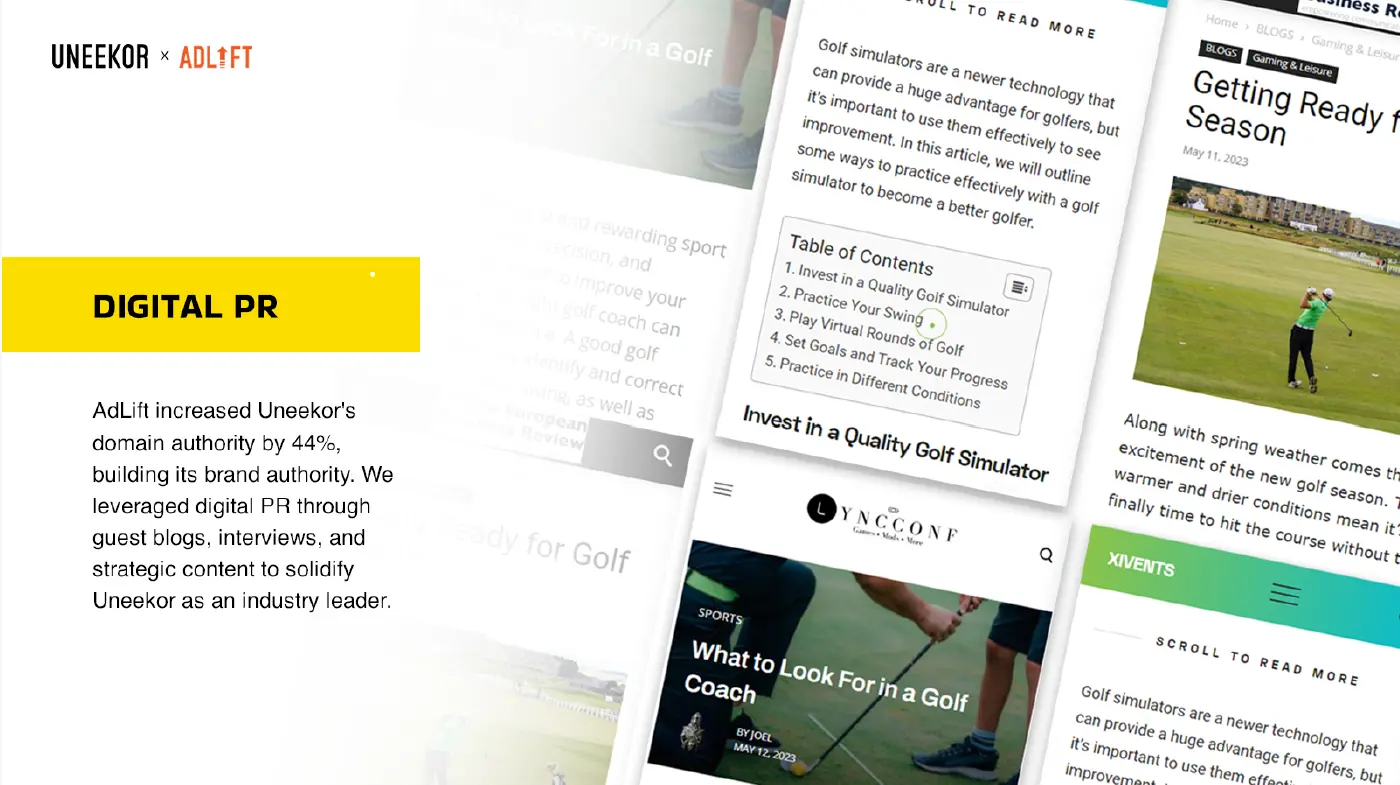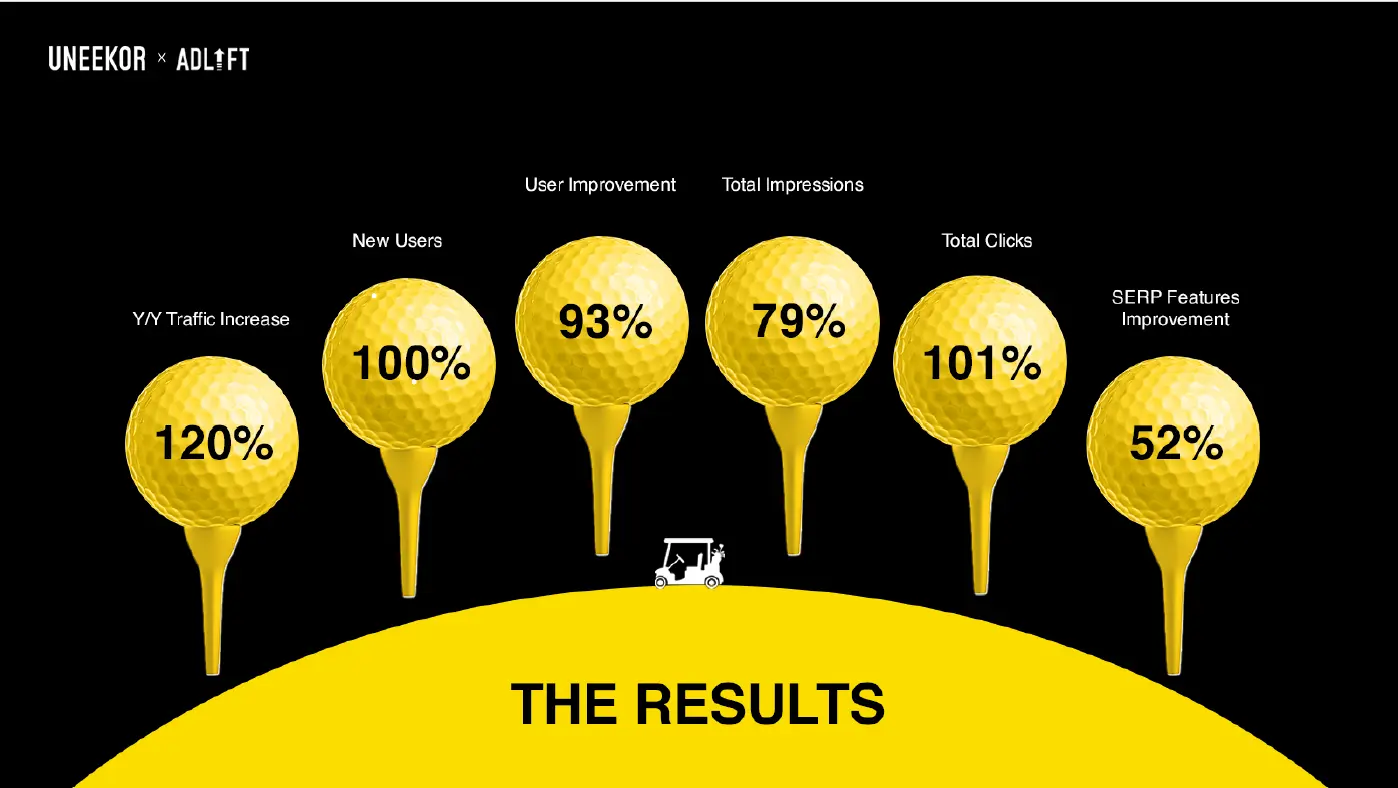Maximize Impact with Digital PR Strategies

Digital PR. Nope, it’s not some fancy new jargon that you need to figure out. Digital PR or Digital Public Relations has the same objective as traditional PR – but online. In today’s digital age, if you want to get the word out about your brand, you can’t escape Digital PR. Did you know that 92% of consumers trust earned media (like articles, reviews, and social media mentions) over traditional advertising? [Source: Nielsen]
Digital PR uses online channels to build brand awareness, enhance reputation, and establish thought leadership. It’s about fostering genuine connections with your target audience and building trust through valuable content and strategic partnerships.
And what’s more, by using digital PR, you boost your brand’s E-E-A-T (Experience, Expertise Authoritativeness, Trustworthiness)- something that Google loves! ( More on this in the blog)
This blog post will give you the complete lowdown on what is digital PR and how you can leverage a well thought out digital PR strategy to reach your audience. So while it has the same objective as traditional PR, the strategies, channels and benefits vary vastly. Lets find out how.
Get
in Touch
Contact AdLift for a 360-degree marketing plan
What does Digital PR cover?
The world of Digital PR is constantly evolving. Why? Because it thrives in a dynamic online environment that’s constantly changing and adapting. What worked yesterday may not necessarily work today. Having said that, let’s first understand what channels digital PR leverages:
Content Marketing:
Quality content that resonates with your audience is the basis of any successful digital PR strategy. Here are some content formats that can be leveraged via digital PR:
Blog Posts: Regularly publish informative and engaging blog posts that address your target audience’s pain points, industry trends, and offer valuable insights.
Example: As Tynker’s SEO agency, AdLift increased Tynker’s page authority, building its brand authority. We leveraged digital PR through guest blogs, interviews, and strategic content to solidify Tynker as an industry leader.
Infographics: These visually appealing one-pagers condense complex information into easily digestible chunks, perfect for sharing on social media and grabbing attention. Example: A financial services company could create an infographic on “5 Steps to Building a Healthy Emergency Fund.”
White Papers: In-depth white papers establish your brand as a thought leader by providing detailed analysis and research on relevant industry topics. Example: An SEO Agency like AdLift could release a white paper on “The State of SEO in the US.”
Ebooks: Offer downloadable ebooks packed with valuable information and actionable tips to nurture leads and capture audience interest. Example: A marketing agency could create an ebook on “The Ultimate Guide to Content Marketing for Small Businesses.”
Social Media Marketing:
Engage your audience across relevant platforms through a combination of organic content and paid campaigns. Emerging trends are constantly shaping the digital PR landscape. Keep an eye on the rise of social audio platforms like Clubhouse and Twitter Spaces, where live conversations are fostering deeper audience connections. User-generated content (UGC) is also gaining traction, with consumers trusting recommendations from real people more than traditional advertising.
Organic Content: Share informative blog posts, industry news, engaging visuals (images, videos), and participate in relevant conversations on platforms like Twitter, LinkedIn, and Facebook.
Paid Campaigns: Utilize paid social media advertising to target specific demographics with laser focus and amplify your content reach.
Influencer Marketing:
Collaborate with your industry thought leaders and social media influencers who your audience relates to.
Partner with creators to create sponsored content, host live Q&A sessions, or product reviews to utilize their expertise and credibility to reach a wider audience.
Example: A fitness apparel brand could partner with a popular fitness influencer on Instagram to showcase their latest workout gear collection.
Online Reputation Management:
Proactively address negative reviews and cultivate positive online sentiment.
Regularly monitor online review platforms and social media mentions. Ensure that you respond professionally and promptly to negative reviews, offering solutions and demonstrating a commitment to customer satisfaction. Request customers who are satisfied with your products or services to leave positive reviews.
Search Engine Optimization (SEO):
Optimize your website content with relevant keywords to improve organic search traffic and visibility.
Conducting a keyword research is the best way for you to identify search terms that your target audience uses, and incorporate those keywords naturally into your content.
Optimize website elements like title tags, meta descriptions, and header tags for better search engine ranking.
Data speaks volumes: Did you know that social media engagement rates for B2B companies average around 0.07%, while B2C companies see an average of 0.53% [Source: Sprout Social]? Understanding these engagement benchmarks can help you tailor your social media strategies for optimal results. Additionally, high-quality backlinks from reputable websites remain critical in PR SEO success.
Digital PR and E-E-A-T
Google always keeps us on our toes with regular algorithm changes. Having said that, the search engine has repeatedly told us to prioritize authentic, user-focused content that reflects our credibility. And that is exactly what digital public relations does!
Digital PR builds brand authority and trust online, directly aligning with Google’s E-E-A-T (Expertise, Experience, Authoritativeness, and Trustworthiness) guidelines. Here’s how:
- Expertise: High-quality content created through digital PR reflects your knowledge and positions you as an industry expert.
- Experience: Case studies and success stories demonstrate your experience in handling real-world challenges.
- Authoritativeness: Media mentions and backlinks from reputable sources establish your brand as an authority in the BFSI space.
- Trustworthiness: Positive online sentiment fostered through digital PR builds trust with potential customers.
Building a Winning Digital PR Strategy
A successful digital PR strategy relies on setting specific and measurable goals. Do you want to increase brand awareness by 20% within the next quarter? Generate leads through influencer partnerships? Clearly define your objectives to track progress and measure success.
Knowing your audience is paramount. Conduct thorough audience research to understand their demographics, interests, and pain points. Utilize tools like surveys and social media analytics to gather valuable insights. You can tailor your content and messaging to resonate deeply with your target market.
Content is truly king in the digital PR world. Focus on creating high-quality, engaging content that provides value to your audience. Go beyond simply promoting your products or services. Tell compelling stories, leverage data-driven insights, and prioritize user-friendliness by optimizing content for readability across devices. Consider different formats like articles, videos, and podcasts to cater to diverse preferences.
Building relationships with journalists, bloggers, and industry influencers is a cornerstone of successful digital PR. Identify relevant influencers in your niche, nurture relationships through genuine interactions, and offer valuable insights they can share with their audience. When pitching stories, personalize your outreach and focus on providing newsworthy content that aligns with their editorial interests.
Get Customized PR Strategy Now!
Measuring your Digital PR Strategy
Digital PR is not a one-and-done endeavor. Measuring ROI (Return on Investment) can be a challenge in digital PR. Define clear goals with measurable metrics upfront. Track key indicators like website traffic and lead generation consistently, and regularly analyze data to assess the effectiveness of your campaigns. Consider conducting A/B testing for different content formats or social media strategies to see what your audience resonates with best. Tools like Google Analytics and social media analytics platforms give you the valuable insights you need into your campaign performance.
Common Challenges and Solutions
Standing out in a crowded space can be daunting. Here’s how to overcome this obstacle:
- Focus on creating unique and valuable content. Don’t just rehash the same information everyone else is sharing. Conduct original research, offer data-driven insights, and leverage storytelling to captivate your audience.
- Identify niche audiences. Instead of trying to reach everyone, target a specific group with tailored messaging. This allows you to build deeper connections and establish yourself as an authority within that niche.
- Securing media coverage requires a strategic approach. Build strong relationships with journalists, personalize your pitches, and highlight the newsworthiness of your story. Offer valuable insights and data-driven content that journalists can readily incorporate into their articles.
AdLift Digital PR Case Studies
AdLift x Uneekor
AdLift has successfully implemented a digital public relations strategy for several reputed clients like campus.edu, Tynker, and Uneekor, amongst others.
Our data-driven SEO for Uneekor started with a technical audit, that pinpointed focus areas like “People Also Ask” and Digital PR. We then combined targeted optimizations, website redesign support, meticulous on-page SEO, and high-quality content to address US golfer needs. This ensured Uneekor ranked for key terms and resonated with their target audience.
Remember, a strong digital PR strategy isn’t built overnight. It requires consistent effort, data-driven insights, and a commitment to creating high-quality, engaging content that resonates with your audience. However, the rewards are substantial. By effectively leveraging digital PR, you can improve your PR SEO, enhance brand visibility, and attract qualified leads, ultimately achieving your marketing goals.
FAQs:
What is digital PR, and how does it differ from traditional PR?
Digital PR leverages online content marketing and social media channels to build brand awareness and establish thought leadership. Traditional PR focuses on securing media coverage in print and broadcast outlets. Both aim to create positive brand perception, but digital PR allows for more targeted and interactive engagement with a wider audience.
Can digital PR help with SEO (Search Engine Optimization)?
Absolutely! Digital PR strategies like content creation and influencer marketing can generate valuable PR links back to your website. These links act as a vote of confidence for search engines, potentially boosting your website’s ranking in search results.
I’m new to digital PR. Where do I begin with a digital PR strategy?
First, start by defining who your target audience is and what your goals are. Then, create high-quality, informative content that resonates with your audience. Explore building relationships with relevant influencers and journalists who can share your content and amplify your brand message.
Is there a specific formula for success in digital PR?
Unfortunately, no one-size-fits-all formula exists. However, consistency is key! Regularly publish valuable content, actively engage on social media, and stay up-to-date on the latest digital PR trends. You need to track your progress and adapt your strategy based on data and results.
How do you measure the impact of digital PR efforts?
There are several ways to measure the success of your digital PR strategy. Track website traffic, social media engagement, brand mentions, and the number of high-quality PR links you acquire. Analyze these metrics to see how your efforts drive brand awareness and achieve your goals.



